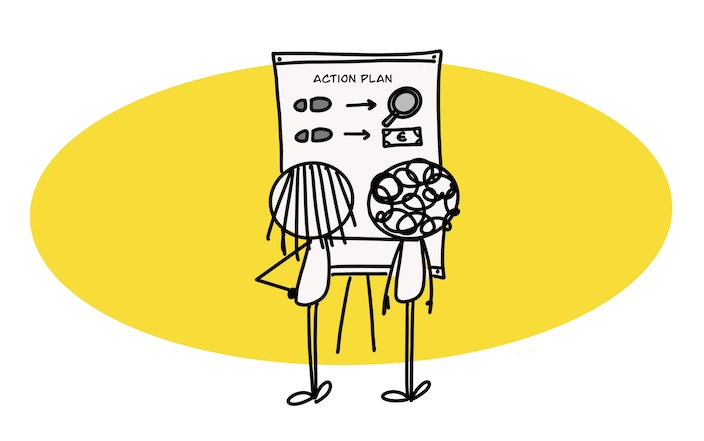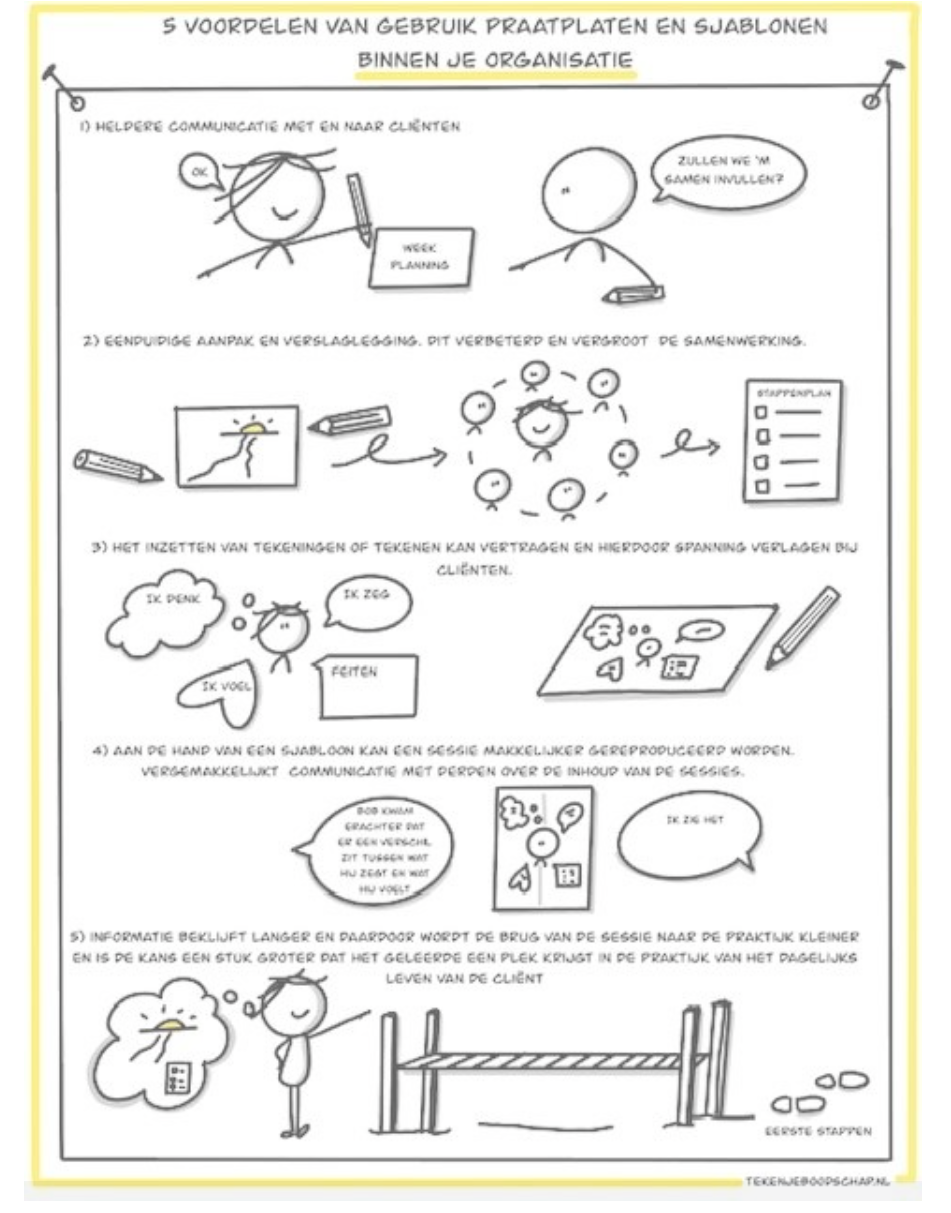Drawing in the therapy setting

I have worked as an art therapist for ten years in various positions and institutes in mental health care. Clearly, I did a lot of drawing in my own sessions with clients, but I was only one of the few therapists doing this. Now that I have been giving Draw Your Message trainings in the Social Domain for a few years, I realize more and more how unfortunate it is that I did not incorporate drawing more during my work in mental health care!
Why don’t we create visual aids and templates for the repetitive conversations we have? We can simply gather input from the team on what is needed and useful, and then distribute the templates/ designs. It seems like a fun and educational activity to find and visualize the essence of many conversations! We can discuss a few during each meeting, make necessary adjustments, and then put them on the intranet for everyone to use! It can only have positive outcomes, right?! Here are a few examples of visual aids and templates that I can imagine would be highly valuable within the social domain:
- Intake and diagnostic procedures
- Initial get-to-know-each other meetings
- Treatment goals and action plans
- Stress thermometer
- Crisis plan
- Phases of the treatment
- Network overview
- Assessment of resources and risk factors
- Treatment evaluation
- Aftercare and prevention plan

Wouldn’t it be incredibly useful if every therapist or staff member used the same visual aids and templates?! Here I present five of many advantages;
- They’re not only meaningful for clients but also serve as a framework for therapists and as a guide within the organization.
- A uniform approach and documentation reduce session preparation time, workload, facilitate smooth handovers, and enhance internal client communication. After each session, you can take a photo and upload it into the reporting system.
- Clients often enter sessions with high levels of anxiety. We all know that individuals under high stress have difficulty with mentalizing. Excessive verbal information is not well retained. Using drawings or engaging in drawing activities can slow down and reduce anxiety, reigniting the process of mentalization.
- In addition, the use of visual aids and templates provides clients with a clear overview, allowing for easy reproduction of the session. Moreover, they facilitate communication with third parties about the session’s content based on the visual aid or completed template.
- Combining words and images significantly improves information retention. By taking a tangible part of the session home, the gap between the session and the practical implementation in the client’s daily life is bridged, increasing the chances of applying what was learned.
Discover the power of visual communication with Draw your message!
By using simple, expressive drawings, you too can effectively convey your message. Business drawing, also known as visual communication, is a method that is becoming increasingly popular. Draw your message offers workshops and training in business drawing to teach you how to say more with just one image than with a thousand words. See dates of upcoming workshops here or check out our book Conversations visualized specifically for Counselors, practitioners and other care providers.
